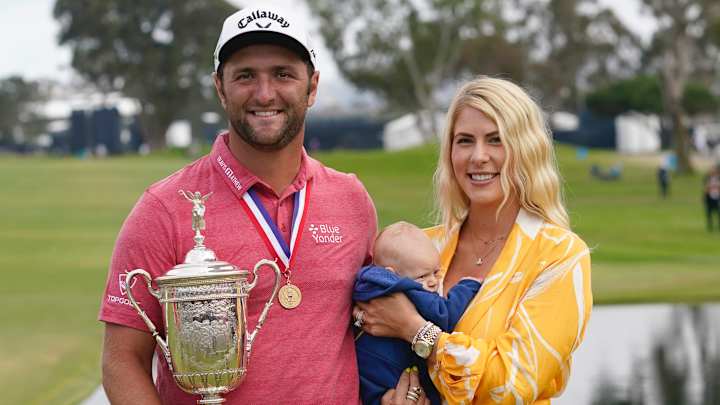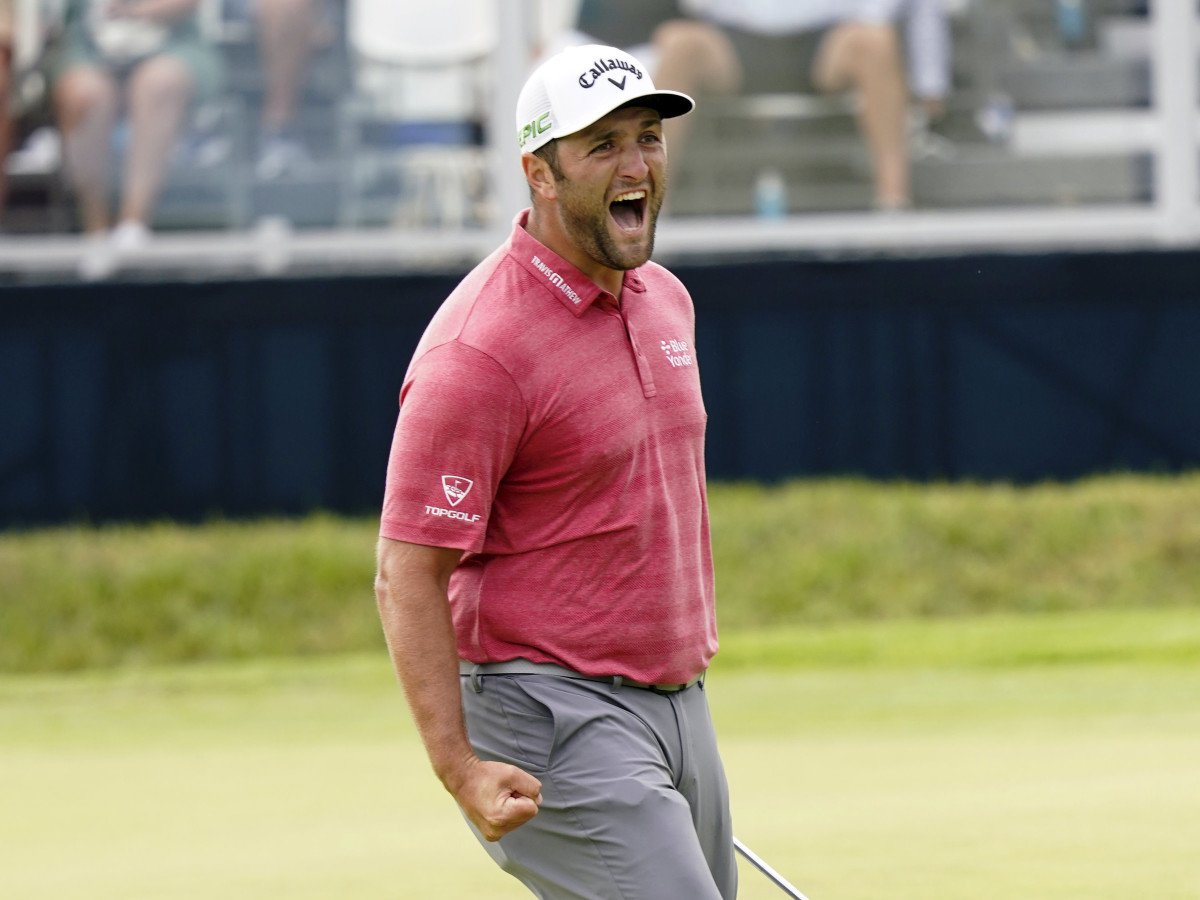New Father Jon Rahm Finally Learned How to Keep His Cool

SAN DIEGO – Jon Rahm overtook so many great golfers on his way to winning the U.S. Open. Rory McIlroy. Brooks Koepka. Bryson DeChambeau. Louis Oosthuizen. Collin Morikawa. And Jon Rahm.
Rahm was, as McIlroy said afterward, “a major champion-in-waiting.” He also had a habit of losing his temper on the course. He did it so much that he said this week he was sick of answering the question. But he also said that, for a long time, he told himself it helped him play better. Then in April, his wife Kelley gave birth to their first child, a boy named Kepa, and Rahm told himself he needed to behave better so he could be a “role model” for his son.
Kepa is 10 weeks old. As Jon said Sunday night, “he won’t remember this.” Thankfully, Kepa can watch the footage every June.

There was Kepa’s dad, draining a 25-foot birdie putt on No. 17, and then draining a 17-footer for birdie on 18. You will not find a more clutch pair of finishing putts in any history book. A lot that goes into putts like those: Technique, reads, trust, and nerves. Also, this: Starting at the PGA in May, a few weeks after Kepa was born, Jon discovered that “ever since the Sunday at the PGA, I felt a bit of a shift on the golf course mentally. I still had that grit, but almost like each miss bothered me less. I couldn’t tell you why.”
Then he told us why: “I believe it's because I really set out myself to be an example for my son that he would be proud of, and I've done some stuff in the past on the golf course that I'm not proud of, and I wish I could eliminate it.”
The U.S. Open ends on Father’s Day every year, and so it lends itself to father-son storylines—some treacly, some forced, and some genuine. This one was subtle. Rahm has always been an engaging guy, and he doesn’t necessarily get madder at himself on the course than other stars. He just showed it more. Kepa made him realize it was a bad look. As it turns out, it was also unnecessary.
Rah said he decided not to look at leaderboards Sunday, but fans kept telling him what was happening. So he decided, he said, to “embrace it.” He looked at all those big names and thought about how cool it would be for whoever ended up winning. He believed it would be him: “I knew there was something special in the air. I could just feel it.”
How special? Well, Rahm ended up winning by a stroke. But that doesn’t really tell the story. On a day when McIlroy shot 73 and DeChambeau shot a 77 (with a 44 on the back!), Rahm shot 67. Torrey Pines was a tough, frustrating golf course Sunday, which is what a U.S. Open course should be. Rahm was always tough and never frustrated.
When he missed a birdie putt on 14, he told caddie Adam Hayes, “That was a good putt.” He had four holes left. He told Hayes two fours and two threes would win the tournament. Then he went and shot 4-3-3-4 and won the tournament.
Rahm has a quick and unconventional swing, but it works for him. He is 26 and will be No. 1 in the world rankings this week. He is such a great player that he would have won a major somewhere along the line even with his old temperament. He might have won several. But it would have been hard to win a U.S. Open, the tournament that rewards discipline and patience more than any other.
“In the past I've gotten frustrated in the U.S. Open,” he said. “I've made a lot of birdies and a ton of bogeys and double bogeys.”

A few weeks ago, Rahm had the Memorial all locked up on Saturday night when a PGA Tour official told him he had tested positive for COVID-19 and had to withdraw. He handled this with aplomb, saying the Tour made the right decision and that he wished he had gotten vaccinated sooner. Privately, he told his family something good would come of it.
That something came this week—and not Sunday. It came earlier.
“I feel like coming in here without having practiced much relaxed me a little bit,” Rahm said. “I thought, you know what, in case I play bad, I have an excuse. I have a bailout in case. I can convince myself, ‘Hey, I had COVID.'”
Being a great golfer is about hitting all the shots; winning majors requires something else. In the past, Rahm got angry when he couldn’t find that something else. This week, he found it in his own head.
How else do we explain those putts? Check the PGA Tour stats: Coming into the week, Rahm was 198th on Tour from 10 to 15 feet, 128th from 15 to 20 and 138th from 20 to 25. But when his last putt of the U.S. Open was 10 feet from the cup, he expected it to go in. It had exactly the line and speed he wanted. That ball was right where it needed to be. So was Jon Rahm’s head. That is why he is the U.S. Open champion.
More Final-Round Coverage From 2021 U.S. Open:
- Rahm wins U.S. Open for First Major Title, by Gary Van Sickle
- How Rahm Finally Learned to Keep His Cool, by Michael Rosenberg
- Daily Question: Which Contender Should Feel Worst About Missed Opportunity?
- How Much Did Luck Play a Role on Sunday? by Alex Miceli
- Phil Mickelson Slumps on Weekend, Now 0-for-30 at U.S. Open, by Mike Purkey
- Mackenzie Hughes Gets Bad Bounce, Worse Break, by Mike Purkey
- Sights and Scenes From Final Round
- Olympic Qualifying Complete, but Top Players Mixed on Participation
